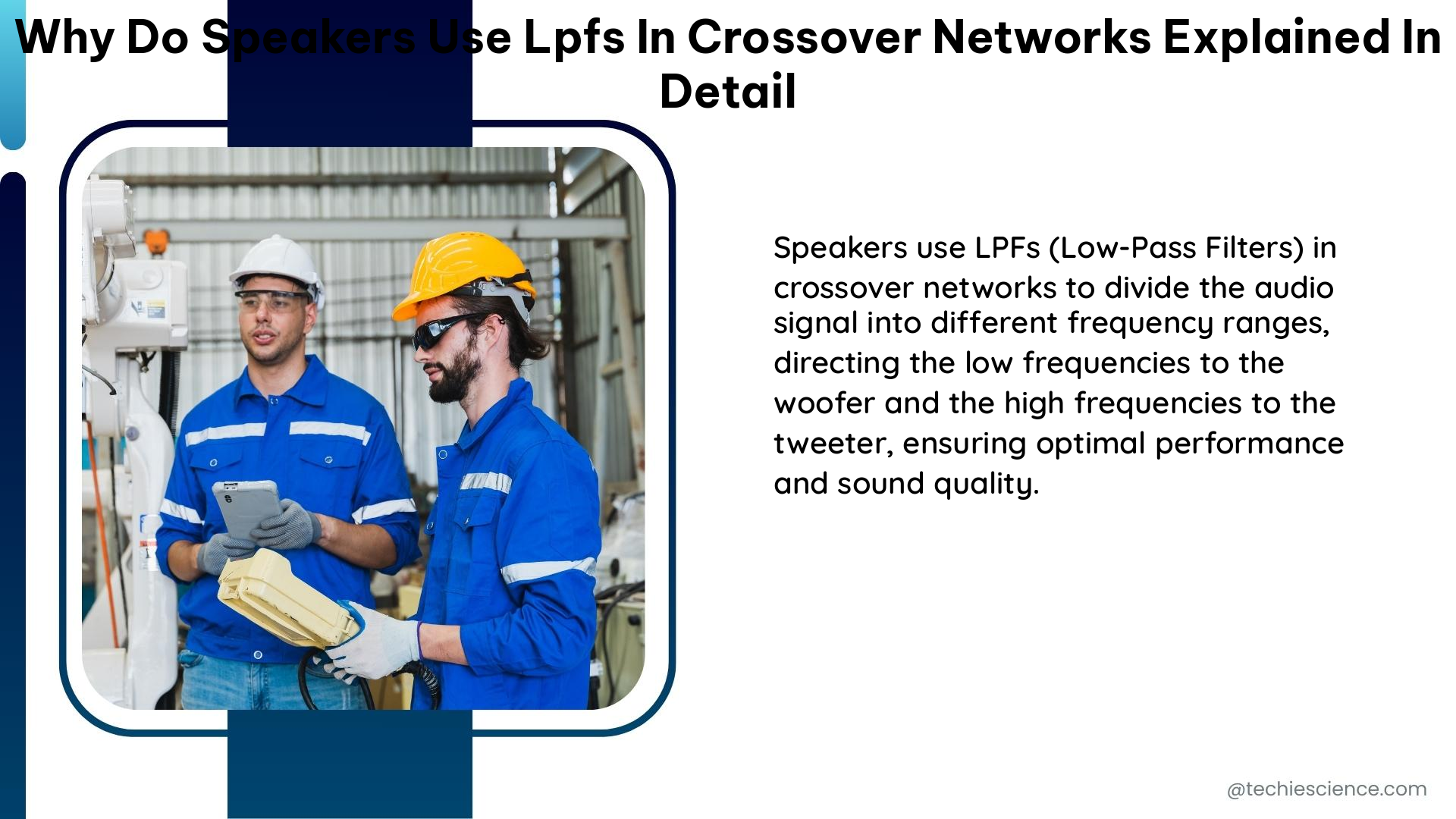Loudspeakers often use low-pass filters (LPFs) in crossover networks to direct specific frequency ranges to the appropriate drivers, such as woofers or tweeters. This approach ensures that each driver operates within its optimal frequency range, enhancing sound quality and reducing distortion.
Theoretical Explanation of LPFs in Crossover Networks
A low-pass filter allows signals below a certain frequency to pass through while blocking or attenuating signals above that frequency. In a speaker crossover network, an LPF is typically applied to the woofer to block higher frequencies that the woofer cannot accurately reproduce. This prevents the woofer from attempting to reproduce frequencies outside of its optimal range, which can lead to distortion and reduced sound quality.
The formula for a simple first-order LPF is:
Vout = Vin * (1 / (1 + (R / Xc)))
Where:
– Vout is the output voltage
– Vin is the input voltage
– R is the resistance
– Xc is the capacitive reactance
Electronics Example of LPF Design

Assuming a 4 ohm woofer and a 1000 Hz crossover frequency, we can calculate the required capacitance as follows:
Xc = 1 / (2π * f * C)
Where:
– Xc is the capacitive reactance
– f is the crossover frequency (1000 Hz)
– C is the capacitance
Rearranging the formula to solve for C:
C = 1 / (2π * f * Xc)
Substituting the values:
C = 1 / (2π * 1000 * 4) = 39.8 µF
Therefore, a 39.8 µF capacitor would be used in this example to create a first-order LPF for the woofer.
Numerical Problems
- Calculate the required capacitance for a 6 ohm woofer with a 500 Hz crossover frequency.
-
Using the formula
C = 1 / (2π * f * Xc), withf = 500 HzandR = 6 ohms, the required capacitance isC = 1 / (2π * 500 * 6) = 53.1 µF. -
Determine the output voltage of a 10 V input signal with a 10 ohm resistor and a 100 µF capacitor at 1 kHz.
- Using the formula
Vout = Vin * (1 / (1 + (R / Xc))), withVin = 10 V,R = 10 ohms,Xc = 1 / (2π * 1000 * 100e-6) = 1.59 ohms, the output voltage isVout = 10 * (1 / (1 + (10 / 1.59))) = 9.13 V.
Figures and Data Points
- A first-order LPF has a slope of -6 dB/octave.
- Higher-order LPFs have steeper slopes, such as -12 dB/octave for a second-order LPF or -18 dB/octave for a third-order LPF.
- The crossover frequency is the point at which the filter begins to attenuate signals.
- The cutoff frequency is typically defined as the frequency at which the signal is attenuated by 3 dB.
References
- Tube CAD Journal – Loudspeakers and Crossovers: https://www.tubecad.com/2021/07/blog0539.htm
- The Zobel – A Speaker Maker’s Journey: https://speakermakersjourney.blogspot.com/2016/12/crossover-basics-zobel_8.html
- Dayton Audio – 700-LPF-4 Low Pass Speaker Crossover 700 Hz 12 dB/Octave: https://www.daytonaudio.com/product/1480/700-lpf-4-low-pass-speaker-crossover-700-hz-12-db-octave

The lambdageeks.com Core SME Team is a group of experienced subject matter experts from diverse scientific and technical fields including Physics, Chemistry, Technology,Electronics & Electrical Engineering, Automotive, Mechanical Engineering. Our team collaborates to create high-quality, well-researched articles on a wide range of science and technology topics for the lambdageeks.com website.
All Our Senior SME are having more than 7 Years of experience in the respective fields . They are either Working Industry Professionals or assocaited With different Universities. Refer Our Authors Page to get to know About our Core SMEs.